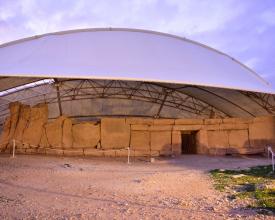
Abris pour sites archéologiques : protéger le patrimoine et améliorer l'expérience des visiteurs

Les structures mégalithiques préhistoriques de Ħaġar Qim et Mnajdra, qui font partie du site du patrimoine mondial des "Temples mégalithiques de Malte", sont gérées par Heritage Malta.
Entre 2004 et 2006, Heritage Malta, avec le soutien financier du Fonds européen de développement régional (FEDER), a développé un projet visant à réduire les dommages causés par la détérioration et les problèmes structurels du site. Parmi différents facteurs, ces sites archéologiques étaient confrontés à des problèmes liés à l'exposition continue aux intempéries et à l'érosion par le sel, à la poussière et à la pollution, à l'humidité, au rayonnement solaire, aux émissions volcaniques, ainsi qu'aux organismes biologiques.
Le projet s'est concentré sur la recherche de solutions à long terme pour la conservation du patrimoine et l'accessibilité des visiteurs.
Le projet comprenait la conception et la construction d'abris pour les structures mégalithiques de Ħaġar Qim et de Mnajdra afin de contribuer à la conservation de ces sites. Ces structures ont été conçues à partir des données recueillies lors de la surveillance des sites et de leur environnement plus large.
Impacts
Les abris ont permis de réduire considérablement la détérioration progressive du patrimoine archéologique et en particulier des structures calcaires fragiles des structures mégalithiques. Cela a permis de réduire le taux de détérioration des matériaux et d'éliminer les effondrements structurels.
En outre, le projet a permis d'améliorer l'expérience des visiteurs car les abris offrent une protection contre le soleil et la pluie et ont amélioré la qualité de l'éclairage sur le site (c'est-à-dire des lumières diffuses sous les abris) ainsi que l'acoustique.





